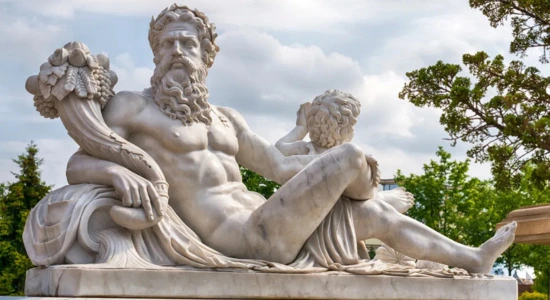Did you know that Ancient Greek and Roman statues weren’t just meant to be admired with the eyes? They were also designed to be smelled! That’s right—many of these sculptures were infused with luxurious fragrances like beeswax, olive oil, and rose-scented perfume, creating a multisensory experience unlike anything we see today.

For centuries, historians have speculated that some cult statues were anointed with perfumes, but new research suggests this practice was much more common than previously believed. Dr. Cecilie Brøns, the study’s author, explains: “I have gathered various sources on this phenomenon, which appears to have been more widespread than expected.”
Ancient texts reveal fascinating accounts of statues being deliberately scented. Roman statesman Cicero described how the people of Segesta in Sicily would anoint a statue of Artemis with “precious unguents” and “frankincense and burning perfumes.” Similarly, Greek poet Kallimachos wrote of a statue of Egyptian queen Berenice II as being “wet with perfume.” Even Pliny the Elder and Vitruvius alluded to this fragrant tradition. Inscriptions found in temples on the Greek island of Delos confirm that rose-based perfumes, known as myron rhodion, were specifically used for this purpose.
So, how exactly were these statues perfumed? Researchers have identified two main techniques. The first, ganosis, involved mixing waxes and fragrant oils to enhance both the sculpture’s aroma and appearance. Beeswax and olive oil were commonly used in this process. The second technique, kosmesis, relied on protective oils to preserve the statues while also giving them a delightful scent.
One striking example comes from the Homeric Hymn to Aphrodite, which describes how the goddess’s statue in Paphos was anointed with perfume in an actual ritual. According to Brøns, these descriptions were not just poetic metaphors—they documented real practices carried out to honor the gods.
But scent wasn’t the only sensory detail sculptors paid attention to. Contrary to the pristine white marble we see in museums today, ancient Greek and Roman statues were once bursting with color. They were painted in vivid pigments, adorned with jewelry, draped in fabric, and crowned with garlands. These statues were designed to be as lifelike as possible—not necessarily in a hyper-realistic way, but in a way that captured the essence of divine and human beauty.
The addition of fragrance played a key role in this. As Brøns puts it, the scents helped viewers imagine how the statues might have smelled if they were real, living beings.
So, next time you picture an ancient Greek or Roman statue, don’t just think of smooth marble and elegant forms. Imagine the vibrant colors, the shimmering gold adornments, and most importantly—the intoxicating scent of roses, incense, and oils that once surrounded these masterpieces.
Brøns’ study is published in the Oxford Journal of Archaeology.
ref : iflscience
If you love fun and fascinating fact fun don’t forget to bookmark our website as your go-to source for amazing stories! And if you enjoy what you read, be sure to share it with friends and family—because great stories are even better when shared!






